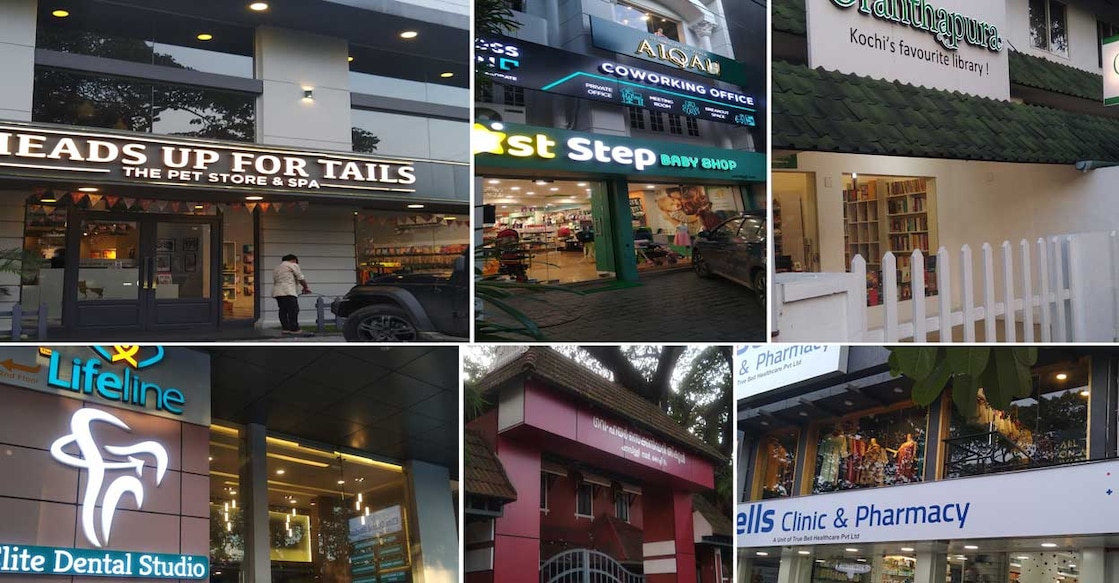Column: The alchemy of space and mixed-use marvels

Mail This Article
The alchemy of space can be witnessed in Kochi's vibrant mixed-use neighbourhoods, which evolved naturally in response to the ever-changing demands of the local community. The city's permissive land use practices have allowed for the seamless blending of diverse activities, resulting in vibrant and dynamic urban communities. Kochi's neighbourhoods also embrace adaptive reuse, skilfully repurposing old warehouses, heritage buildings, and houses to preserve the city's existing building stock while meeting the evolving demands of its residents. Even within a radius of 2 kilometres, an eclectic mix of commercial establishments coexist harmoniously with residential properties, offering convenient access to essential amenities and reducing the burden of extensive commuting.
These mixed-use communities have evolved into vibrant hubs that encourage local entrepreneurship and meaningful social engagement. The strategic integration of diverse functions into a compact area has maximised land use, enriching the urban fabric of Kochi.
Self-regulating neighbourhoods
Kochi's organic mixed-use neighbourhoods stand as remarkable examples of inclusivity, as evidenced by the coexistence of different socioeconomic strata within the same neighbourhood. At the heart of this inclusivity lie the neighbourhood welfare associations, which are ubiquitous across Kerala. These associations play a pivotal role in strengthening the neighbourhood's social capital by empowering residents to actively participate in decision-making, resolve conflicts internally, and establish cultural norms that promote successful cohabitation.
The neighbourhoods adjust to market demands, accommodate new small businesses, and maintain a shared understanding of community standards. Yet, despite their inherent self-regulation, Kochi's mixed-use neighbourhoods encounter challenges that necessitate external intervention. Conflicts between commercial and private stakeholders may arise, necessitating effective resolution mechanisms to preserve social cohesion.
Furthermore, inadequate urban planning poses further challenges to these neighbourhoods. As rapid urbanisation puts strain on infrastructure and public utilities, there is a pressing need to address issues related to transportation, parking, utilities, and other essential amenities. The city confronts hurdles in terms of safe walkability. Despite affordable public transportation, there is a significant reliance on vehicles, resulting in traffic congestion and environmental issues. This highlights the need for planned growth to resolve these issues.
Who should control growth?
While considering viable mixed-use development in Kochi, the city's mixed cultural history, economic potential, and urbanisation patterns need to be considered. Embracing existing mixed-use patterns presents an opportunity to preserve its identity.
Kochi offers opportunities for both planned and organic development, with planned approaches guiding expansion and organic methods respecting historical contexts. While organic mixed-use neighbourhoods have demonstrated inclusivity and adaptability over time, planned development is essential to accompany organic growth. It provides a framework to address challenges that organic growth may encounter, ensuring efficient allocation of infrastructure and other resources. Essential amenities like transportation and utilities can be strategically placed to cater to the growing population. Furthermore, planned development helps avoid haphazard sprawl by optimising land use, leading to more resource-conscious urban forms. However, during the implementation of planned development strategies, it is critical to carefully navigate the potential risks of gentrification and displacement of vulnerable communities. Community engagement plays a crucial role in both approaches, involving local residents, businesses, and stakeholders in decision-making through public consultations, and collaborations with local organisations.
In newer neighbourhoods, planned mixed-use development can ensure coordinated growth, but preserving the unique character of older neighbourhoods may necessitate a more organic approach. Planned development strategies build on the strengths of existing mixed-use neighbourhoods while addressing potential challenges. A balanced approach will not only preserve the city's distinct identity but will also create inclusive and vibrant urban environments for its residents.
Towards an Urban Transformation
Mixed-use neighbourhoods offer a promising solution to the complex issues of urban sprawl and social inequality. By strategically integrating diverse functions within a compact area, these neighbourhoods have the potential to create vibrant and inclusive urban environments. However, their success is not without challenges, including meeting infrastructure demands, managing transportation demands, and ensuring harmonious coexistence between commercial and residential activities. Nevertheless, mixed-use neighbourhoods hold immense potential to drive transformative urban change. With a well-balanced approach that combines planned and organic strategies, cities such as Kochi can shape their future while preserving their unique cultural heritage. By embracing the transformative power of mixed-use development, Kochi can pave the way for more equitable and thriving neighbourhoods.
(Ann Rochyne Thomas is a bio-climatic spatial planner and founder of the Centre for Climate Resilience - a sustainability and climate change advisory.)


